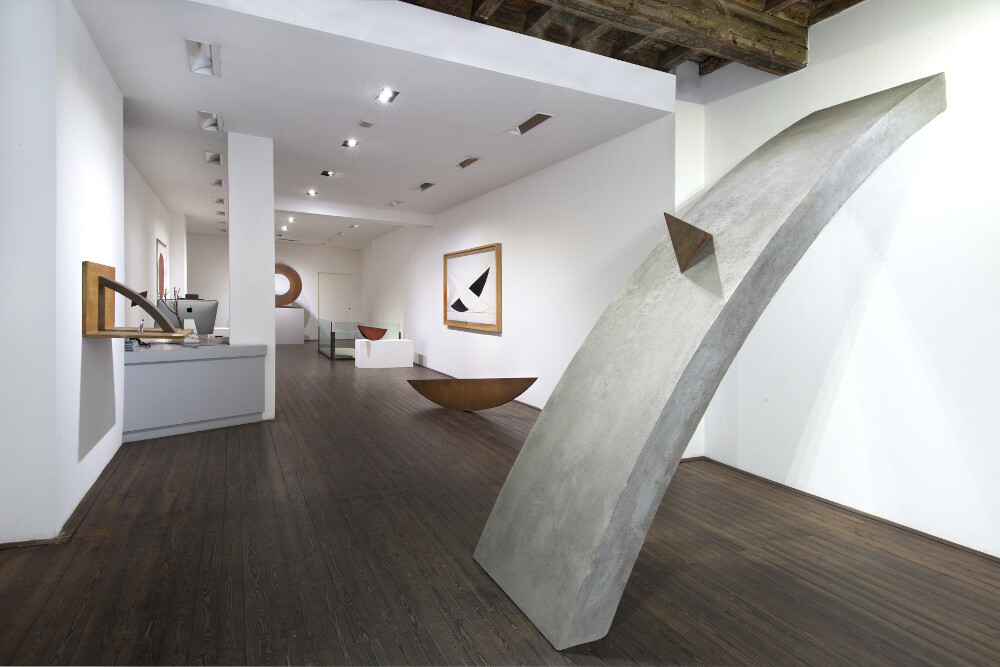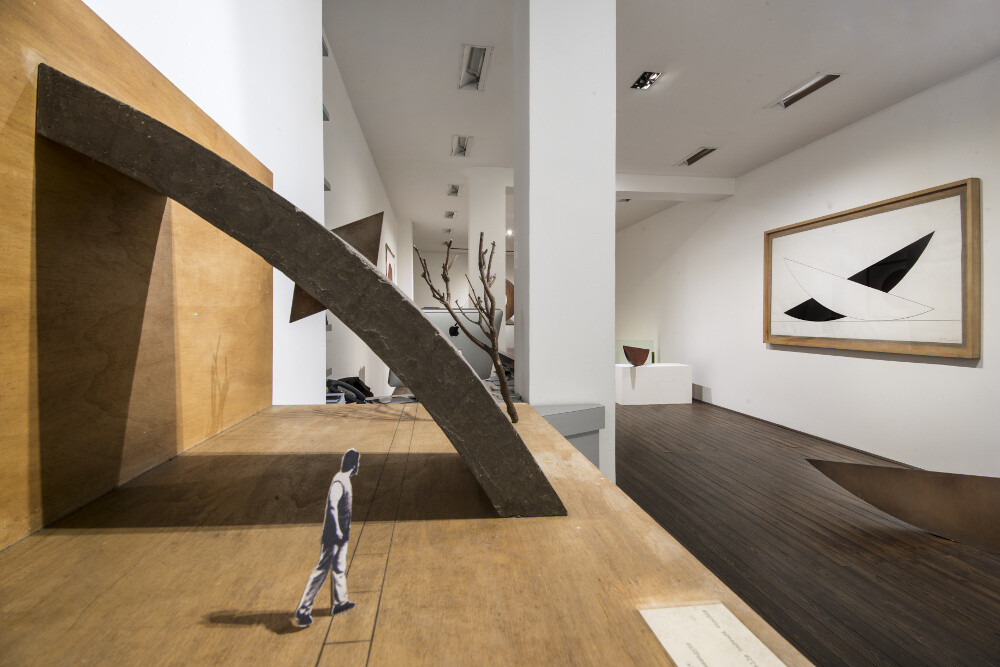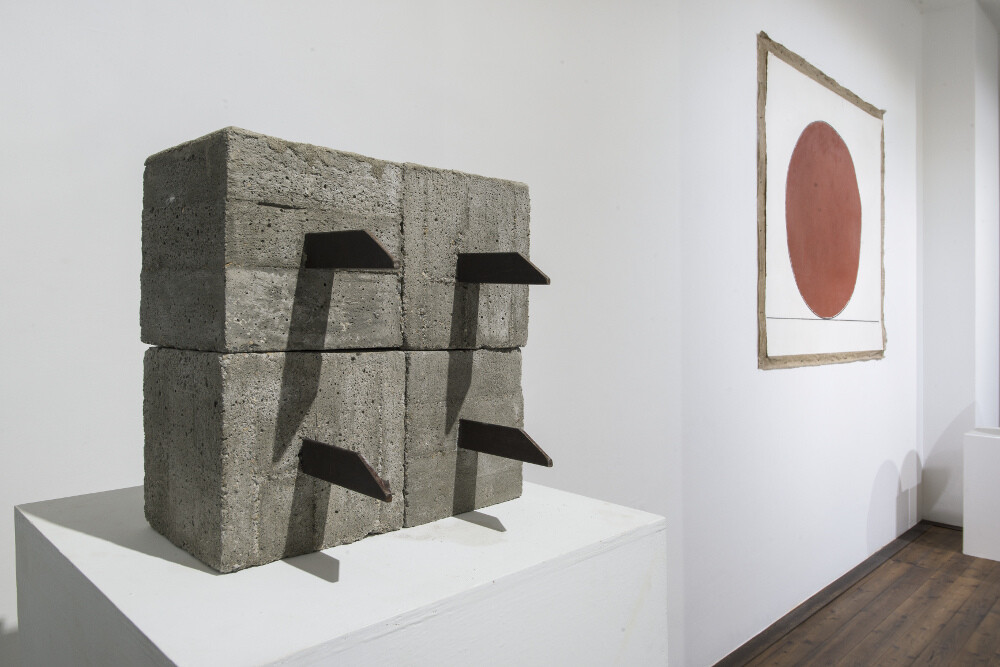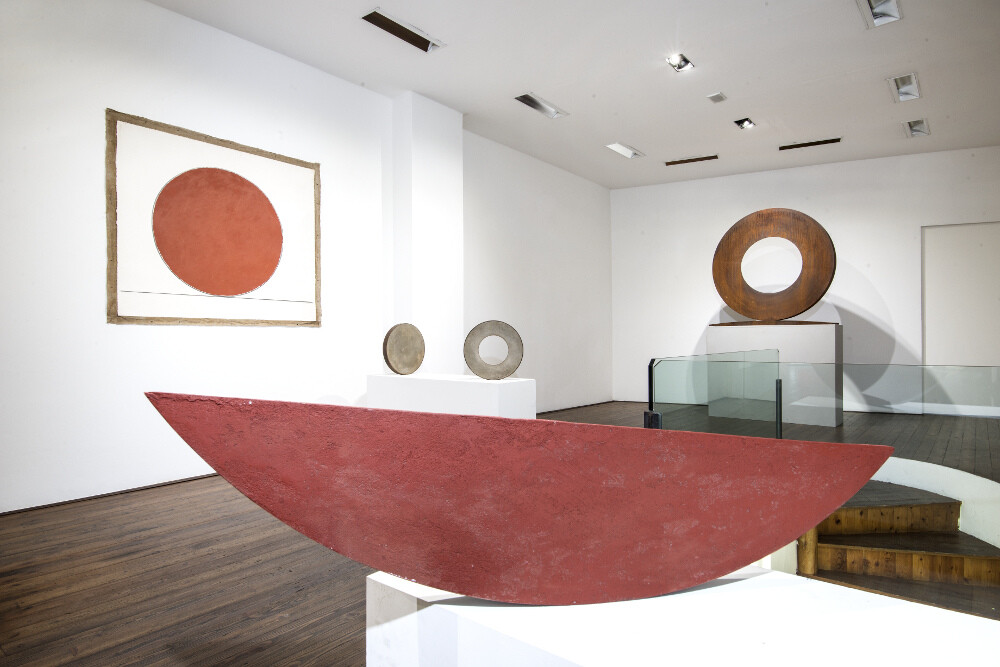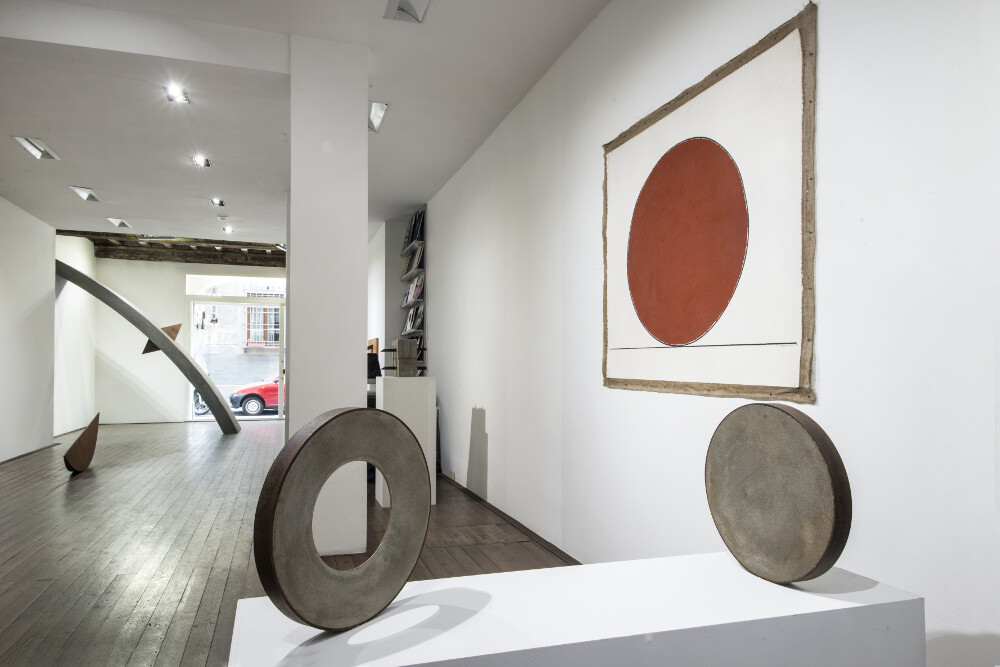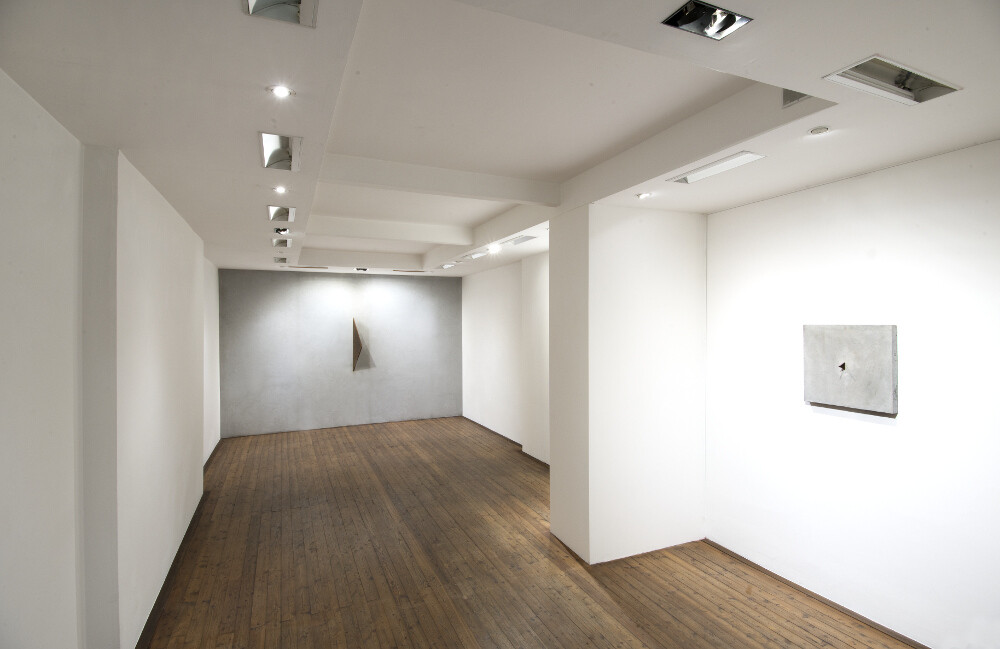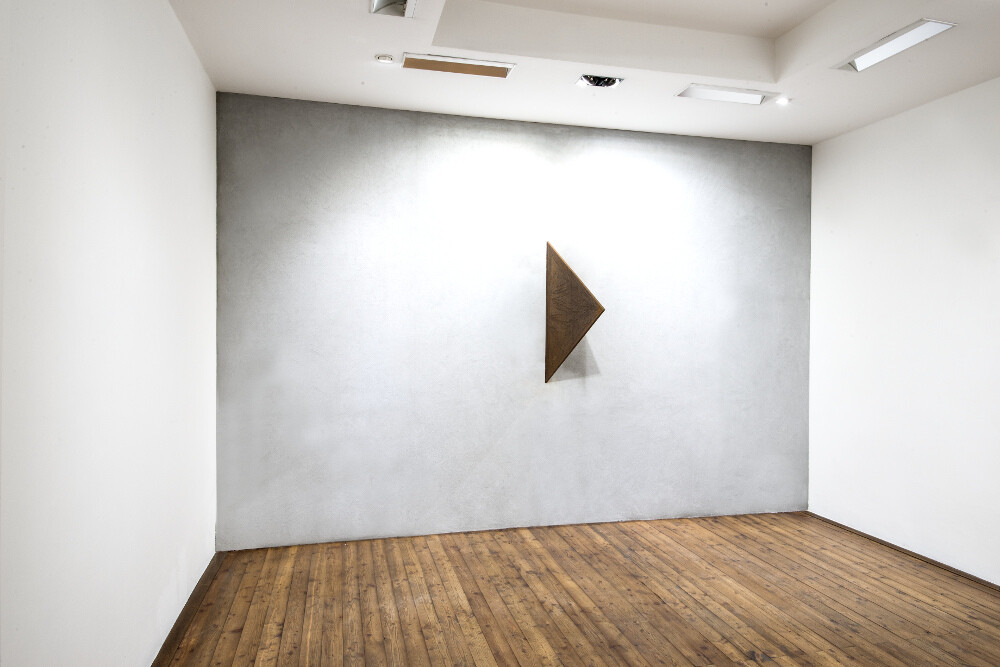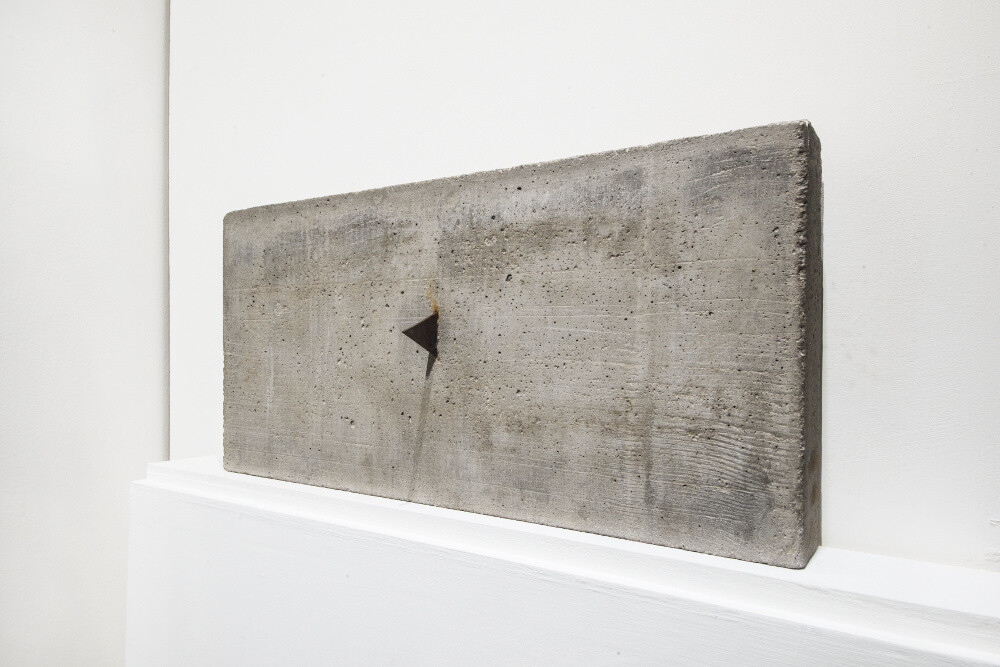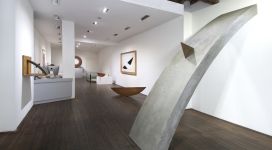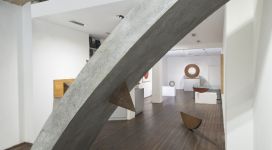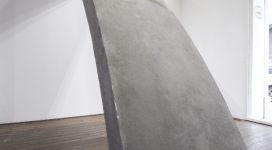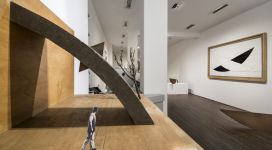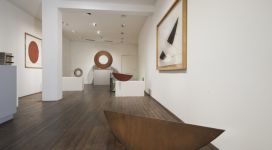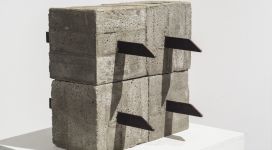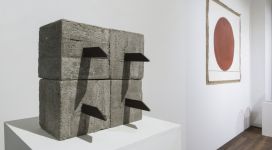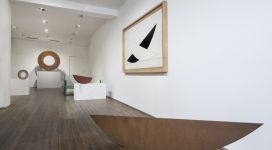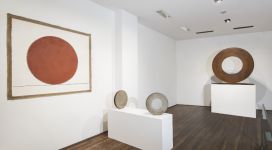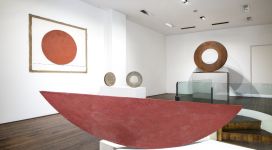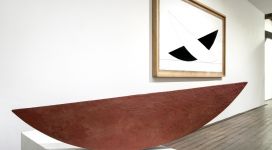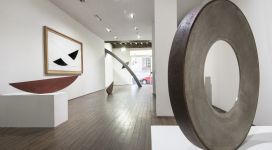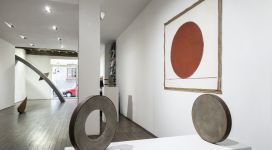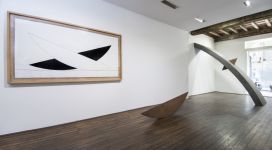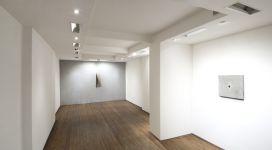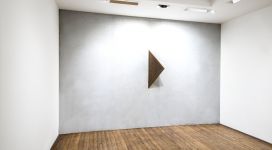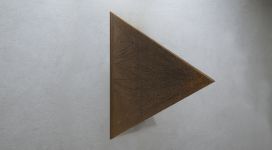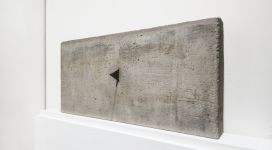| MAURO STACCIOLI | Biography | |
| Marking Space | Catalogs | |
| curated by ALBERTO FIZ | ||
| 11 may – 27 july 2018 |
After the preview in its own stand at miart 2018 and waiting for the monumental exhibition at Terme di Caracalla in Rome, Il Ponte presents Mauro Staccioli. Marking Space.
Planned in collaboration with the Archive, the exhibition offers a selection of important works in the articulate production of Mauro Staccioli, within a philological reconstruction.
Of particular concern is the reconstruction of the space (the wall with the iron point) created by Mauro Staccioli in the year 1975 for Studio Sant’Andrea of Milan.
“Sculpture is unquestionably a ‘shaper of space’. But this shaping can take place in two distinctive ways: a work may be created in view of the space it will take up; or it will affect that space by its very presence.
In the case of Mauro Staccioli we are almost always dealing with a work designed in relation to a given setting – urban, country, home etc. – Into which it is then incorporated; so right from its embryonic stage, it is created with a certain ‘necessity’ in mind. This is what happened with the gigantic sculpture in Seoul and also the sculpture on the steps of the Modern Art Gallery in Rome. It is also the case with the intricate ‘arboreal’ work set in Celle Park and the delicate ‘gateway’ inserted in Vigevano Castle. There is certainly no lack of examples, bearing in mind the extensive and extremely varied corpus of work by the artist, found as far afield as Italy, Belgium, the Andorra Republic and California.
Nevertheless, the most striking thing emerging from all of Staccioli’s work is the fact that it is basically tied to a decidedly architectural language: a language which, right from the beginning, was aimed at either taking up and shaping outside space or being almost forcibly ‘incorporated’ in the space inside a building or natural environment; yet always working along very similar lines to architectural design.
Whereas in the sculptures dating way back to the 1970s, such as those strategically positioned ‘to protect’ the Balze in Volterra, Staccioli’s works were reinforced by metal spines which appeared to attack the horizon, in later years and right down to the present day they were mainly designed to be striking signs – often gigantic – as in the case of his pyramidal, rectangular, spherical, circular or broken forms – but always carefully counterpointed in relation to the surrounding environment. This meant that even the tiniest sketches and preparatory drawings were created like outlines inevitably influenced by the surrounding atmosphere.
[…] The sketches, rough drawings and documentation on structures still in an embryonic state but already identifiable, allow us to follow some of the stages in the artist’s creative process. This particularly applies to those people who are already familiar with his existing works. Even in this case – or, in other words, when dealing with a work still in a state of becoming – we can note how he still worked along sculptural lines closer the world of architecture than to ‘decoration’ or craft objects.
Whereas, in actual fact, lots of artists from last century (from Giacometti and Consagra to Marini and Lipschitz) developed a language – either figurative or abstract – which always had an ‘ornamental’ side to it, Staccioli, like lots of artists who believed in primary structures, such as Richard Serra, Caro, Newman and Morris, always focused on the structural side without ever lapsing into the ‘pleasantness’ of ornamentation or the dimensional side of home objects or the goldsmith’s trade.
Attention was focused entirely on the structural volume and bulk associated with large masses.
That is why […] accentuated outlines (if only twodimensionally) are always linked with golden geometry: triangles, rhombuses and lozenges, faintly coloured or colourless, are the basic letters in the ‘story’ being told. A sculptural story, which is extremely severe and solemn, designed to make a powerful impact on its location and on space and time; there is none of the frivolous dawdling of so many modernday works, ready to be relegated to the status of ornaments or personal cosmetics. Although Staccioli’s work is always likely to be more difficult to pigeonhole or categorise, in compensation it will inevitably have that timeless dignity giving it at least the hope, if not the certainty, of lasting forever.”
Gillo Dorfles, Foreword, Mauro Staccioli. At the Roots of Sculpting, Corraini Edizioni, Mantova, 2008.
